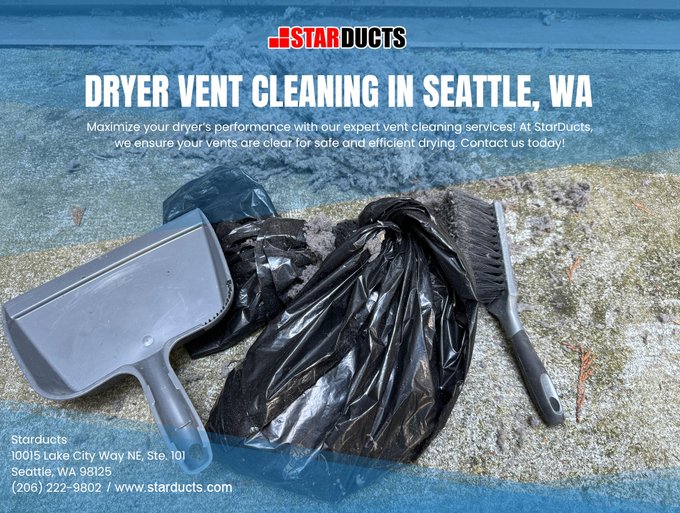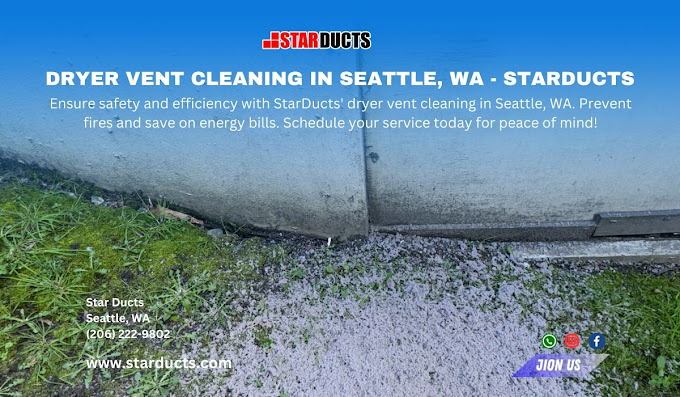Introduction
Lint buildup in dryer vents is an often-overlooked household hazard that can lead to disastrous situations. Many homeowners may not realize the severity of this issue until it's too late. In this article, we will explore The Risks of Lint Buildup: What Happens if You Don't Remove It? and provide insights on how to prevent lint accumulation, the importance of regular maintenance, and answers to common questions regarding dryer vent cleaning.
Table of Contents
Understanding Lint Buildup- What is Lint? Where Does Lint Come From?
- Why Should You Clean Your Dryer Vent? How Often Should a Dryer Vent Be Cleaned?
- Fire Hazards from Clogged Vents Reduced Efficiency and Increased Costs
- How Do You Know If a Dryer Vent Is Clogged? Common Indicators of a Clogged Vent
- Can I Clean My Dryer Vent Myself? How Do Professionals Clean Dryer Vents?
- Is It Better to Clean Dryer Vents from Inside or Outside? Is Dryer Vent Cleaning Worth It?
- How to Clean a Dryer Vent to Prevent Fires Tips for Maintaining a Clear Dryer Vent
Understanding Lint Buildup
What is Lint?
Lint is composed of tiny fibers that come from clothing and textiles during the drying process. When clothes tumble in the dryer, these fibers shed off due to friction, heat, and moisture evaporation.
" width="560" height="315" frameborder="0" allowfullscreen>
Where Does Lint Come From?
Lint primarily originates from natural fabrics such as cotton, wool, and synthetic materials like polyester and nylon. Over time, these fibers accumulate within the dryer vent system if not properly cleaned.
The Importance of Cleaning Your Dryer Vent
Why Should You Clean Your Dryer Vent?
Cleaning your dryer vent is crucial because it directly affects your home's safety and the efficiency of your appliance. A clean vent ensures that air flows freely, reducing the risk of fire hazards while also enhancing the performance of your dryer.
How Often Should a Dryer Vent Be Cleaned?
Experts recommend cleaning your dryer vent at least once a year; however, if you frequently dry heavy items like blankets or towels, you may need to do it more often. Consider factors like family size and usage frequency when determining how often should a dryer vent be cleaned.
The Risks Associated with Lint Buildup
Fire Hazards from Clogged Vents
One of the most significant risks associated with lint buildup is fire. According to the National Fire Protection Association (NFPA), failure to clean dryer vents is one leading cause of house fires in the U.S. When lint accumulates, it restricts airflow, causing overheating—potentially igniting lint or other flammable materials nearby.
Reduced Efficiency and Increased Costs
Clogged vents make dryers work harder than necessary, leading not only to increased energy bills but also shortening the lifespan of your appliance. This inefficiency raises questions like: “Does cleaning dryer vent help dry clothes?” Yes! A clean vent allows your dryer to operate effectively, meaning fewer cycles are needed for drying clothes.
Signs Your Dryer Vent Needs Cleaning
How Do You Know If a Dryer Vent Is Clogged?
There are several indicators that suggest your dryer vent might be clogged:
- Clothes take longer than normal to dry. The outside vent flap doesn't open properly when the dryer is running. The laundry room becomes unusually hot or humid during operation. A burning smell emanates from the appliance.
Common Indicators of a Clogged Vent
Keep an eye out for:
- Excess lint accumulation on clothes. Frequent overheating or tripping circuit breakers. An increase in static electricity in dried clothing.
How to Clean Your Dryer Vent Effectively
Can I Clean My Dryer Vent Myself?
Yes! Many homeowners can perform basic cleaning using specialized kits available on the market or household tools like vacuums and brushes. However, ensure you follow safety guidelines and consult your user manual before proceeding.
How Do Professionals Clean Dryer Vents?
Professional services typically involve comprehensive inspections followed by vacuuming out accumulated lint using specialized tools designed for deep cleaning vents—ensuring thorough removal without damaging ductwork.
DIY vs Professional Cleaning
Is It Better to Clean Dryer Vents from Inside or Outside?
While both methods have their merits, it's generally best practice to clean from both ends when possible for optimal results—this ensures any blockages are fully cleared away.
Is Dryer Vent Cleaning Worth It?
Absolutely! Investing in professional cleaning can save you money long-term by preventing costly repairs due to fire damage and improving energy efficiency.
Preventative Measures for Lint Buildup
How to Clean a Dryer Vent to Prevent Fires
Regular maintenance is key! Here are steps you can take:
Disconnect your dryer. Use a vacuum attachment or brush kit specifically designed for cleaning ducts. Inspect outside vents for blockages regularly. Ensure that flexible ducting isn't overly bent or kinked.Tips for Maintaining a Clear Dryer Vent
- Always use proper duct materials; avoid plastic or vinyl. Keep outdoor vents clear from debris or snow accumulation. Check your lint trap before every load!
FAQs About Dryer Vent Cleaning
1. How do I know if my dryer vent is too long?
2. What happens if you don't clean your dryer vent?
Failure can lead to hazardous fires due to overheating along with decreased efficiency requiring longer drying times—which affects utility costs!
3. Can I use a leaf blower to clean my dryer vent?
Yes! Leaf blowers can be effective tools for dislodging lint but ensure you're safe while doing so—avoid pushing debris further into dryer vent cleaning StarDucts ducts!
4. How long does it take to clean a dryer vent?
5. Should you turn the dryer on when cleaning vent?
It’s best practice not too; keep it off while performing maintenance unless specifically instructed otherwise by professionals during service calls!
6. Are all dryers equipped with second lint traps?
Not all models have them—however many do offer additional filtration systems which can aid significantly in keeping lint at bay.
Conclusion
In conclusion, The Risks of Lint Buildup: What Happens if You Don't Remove It? cannot be overstated enough! Regular maintenance and vigilant monitoring are essential practices every homeowner should adopt—not only for safety reasons but also for ensuring energy-efficient operation over time! By being proactive about cleaning out those pesky vents regularly (at least once per year), you're taking significant strides toward protecting both yourself & property alike while maximizing functionality within daily living spaces!

